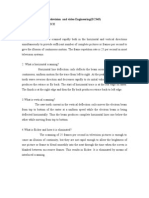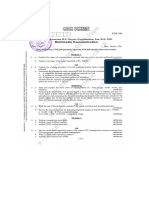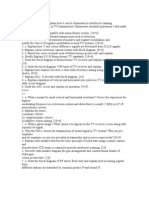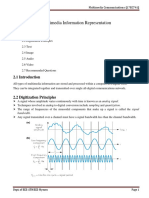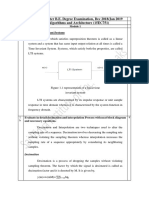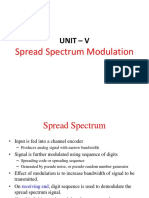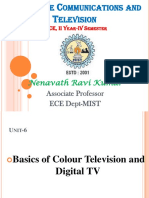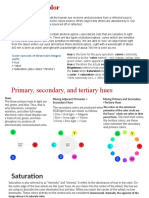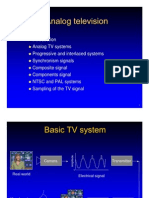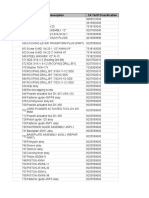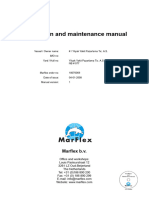0% found this document useful (1 vote)
4K views22 pagesPAL Encoder and Decoder
This document discusses the PAL encoder and decoder used in color television systems. It contains 3 key points:
1) A PAL encoder converts RGB signals into a color composite video signal (CCVS) for transmission by modulating the color difference signals U and V onto a color subcarrier using quadrature amplitude modulation. This allows both color signals to be transmitted within the same 5MHz bandwidth.
2) A PAL decoder takes a CCVS signal as input and outputs RGB signals. It demodulates the color difference signals U and V from the color subcarrier.
3) PAL improves on NTSC by changing the phase of the color subcarrier by 180 degrees every other line. This helps
Uploaded by
jutexCopyright
© Attribution Non-Commercial (BY-NC)
We take content rights seriously. If you suspect this is your content, claim it here.
Available Formats
Download as PDF, TXT or read online on Scribd
0% found this document useful (1 vote)
4K views22 pagesPAL Encoder and Decoder
This document discusses the PAL encoder and decoder used in color television systems. It contains 3 key points:
1) A PAL encoder converts RGB signals into a color composite video signal (CCVS) for transmission by modulating the color difference signals U and V onto a color subcarrier using quadrature amplitude modulation. This allows both color signals to be transmitted within the same 5MHz bandwidth.
2) A PAL decoder takes a CCVS signal as input and outputs RGB signals. It demodulates the color difference signals U and V from the color subcarrier.
3) PAL improves on NTSC by changing the phase of the color subcarrier by 180 degrees every other line. This helps
Uploaded by
jutexCopyright
© Attribution Non-Commercial (BY-NC)
We take content rights seriously. If you suspect this is your content, claim it here.
Available Formats
Download as PDF, TXT or read online on Scribd
/ 22






